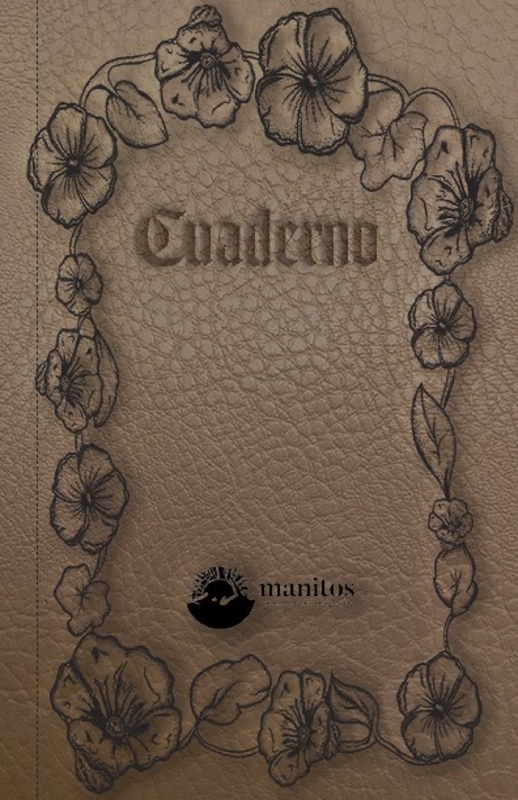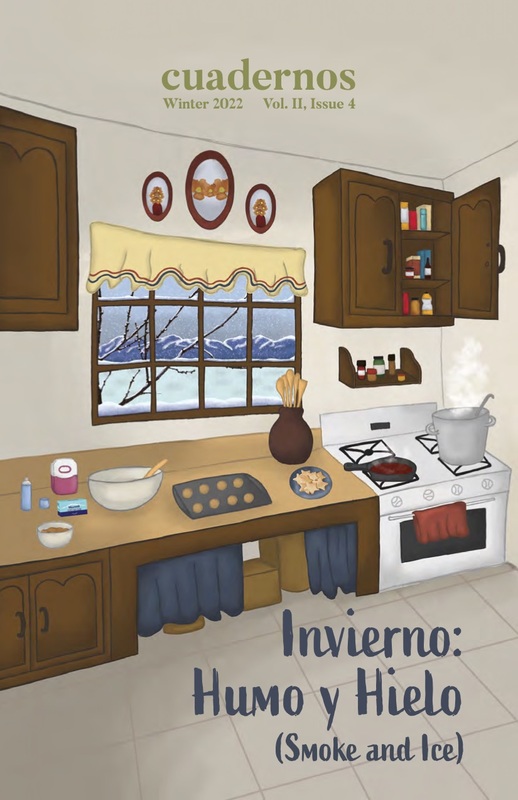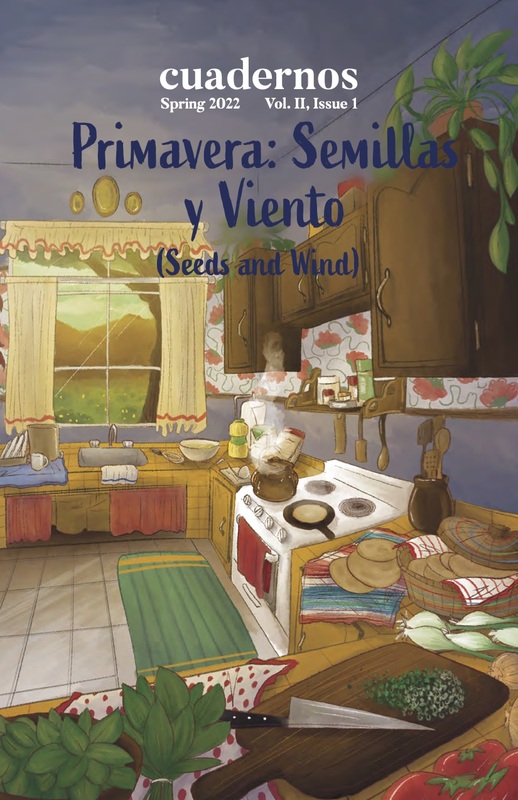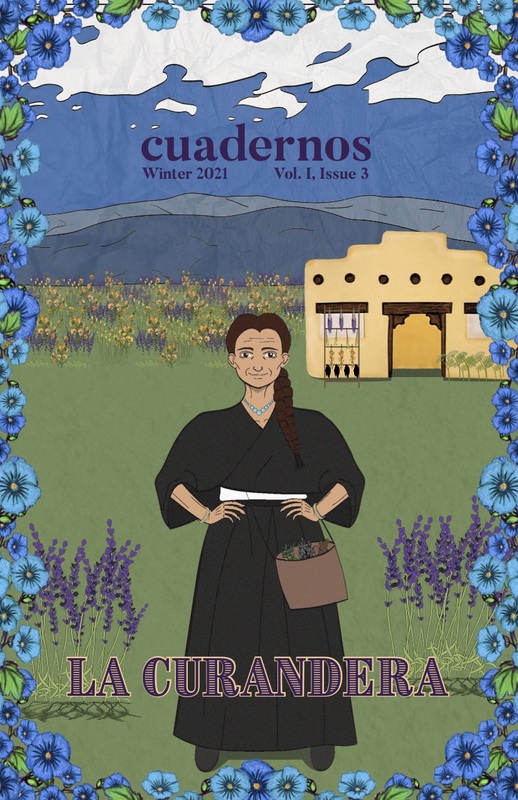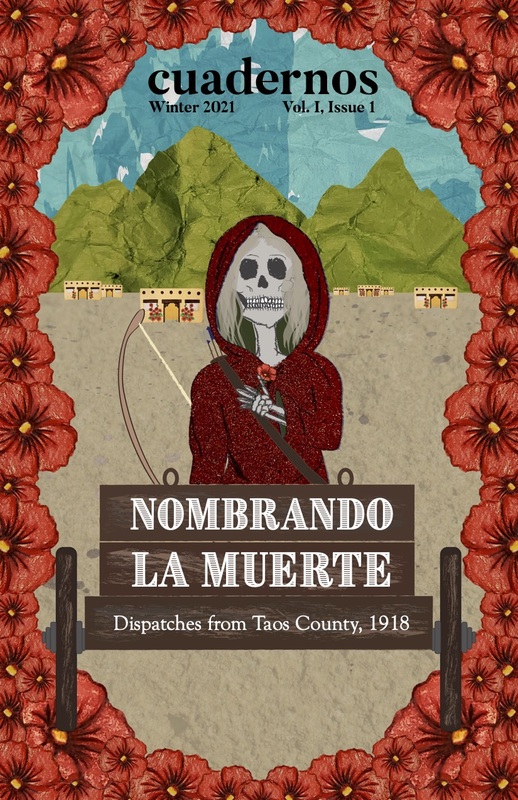Manitos Cuaderno Series
- Title
- Manitos Cuaderno Series
- Description
-
The year 2020 was defined by the COVID-19 pandemic, which decimated families and communities in northern New Mexico and southern Colorado where many heirs to the unique Indo-Hispano culture often refer to themselves as Manitos. In response, the Manitos Community Memory Project (MCMP), with support from the American Recovery Act, National Endowment for the Humanities, initiated a series of publications to help Manitos address the trauma of the pandemic through connection to their history, cultural heritage, and to each other. The format of the publications pays homage to the cuadernos, small journals or notebooks, traditionally used by Manitos to record all kinds of information.
The Manitos Community Memory Project (MCMP) was initiated in January 2019 with funding from the Andrew W. Mellon Foundation through a grant to the Center for Cultural Technology, a partnership between the Department of Media Arts and Technology at New Mexico Highlands University in Las Vegas, New Mexico, and the New Mexico Department of Cultural Affairs, working in collaboration with the New Mexico Humanities Council and a network of Manito community partners and academic researchers. The shared vision is to protect and preserve the region's at-risk cultural heritage by creating a network of memory gathering sites located in rural libraries, schools, and non-profit organizations, and by building a sustainable digital archive by and for Manitos. The original focus of the MCMP was on healing from historical trauma, passed down from generation to generation, and recovery from the legacy of colonialism. The COVID-19 pandemic expanded the focus to address a new trauma.
The Manitos Cuaderno Series was one of a number of MCMP internship projects designed to demonstrate the value of a community-directed digital cultural heritage repository. Initially envisioned as a series of downloadable digital publications, it was Ellen Dornan, former director of digital initiatives at the New Mexico Humanities Council, who had the vision that they should be printed and distributed free of charge and found the funding to make it happen. In January 2021 the printed sets of Volume I made their debut. In 2023 Volume II was published. - Rights Holder
- Manitos Community Memory Project
- Creator
- Manitos Community Memory Project
- Date Created
- 2020 - 2023
- Language
- English
- Spanish
Items
-
Blank CuadernoThe year 2020 was defined by the COVID-19 global pandemic, which decimated many families and communities in northern New Mexico and southern Colorado where heirs to the unique Indo-Hispano cultural heritage of the region often refer to themselves as Manitos. In response, the Manito Community Memory Project (MCMP), with support from the American Recovery Act, National Endowment for the Humanities, initiated a series of publications to help Manitos address the trauma of the pandemic through connection to their history, cultural heritage, and to each other. The blank booklet was designed by MCMP interns to evoke the leatherbound cuadernos, small notebooks or journals, that have been used historically by Manitos to record all types of information. It invites Manitos to continue the tradition by recording their own reflections and stories of the COVID-19 pandemic in words and images.
-
Cuadernos volume II issue 4 - Invierno: Humo y Hielo (Smoke and Ice)Volume Two of the Manitos Community Memory Project Cuaderno Series, a set of four booklets on the theme of food sovereignty, features the land-based Indo-Hispano culture of northern New Mexico and southern Colorado where natives often refer to themselves as Manitos--their shared history and culture, how they connect through traditional foodways, and how the changing seasons and weather give shape and meaning to the activities of daily life. Each issue focuses on one of the four seasons starting with Spring. Winter, the final issue focuses on the cold months as a time for storytelling and of course Christmas with its many traditional practices and hearty winter dishes.
-
Cuadernos volume II issue 3 - Otoño: Cosechas y Cazas (Harvest and Houses)Volume Two of the Manitos Community Memory Project Cuaderno Series, a set of four booklets on the theme of food sovereignty, features the land-based Indo-Hispano culture of northern New Mexico and southern Colorado where natives often refer to themselves as Manitos--their shared history and culture, how they connect through traditional foodways, and how the changing seasons and weather give shape and meaning to the activities of daily life. Each issue focuses on one of the four seasons starting with Spring. The Fall issue focuses on the harvest season and the preparation of traditional remedies made from local herbs and other plants. October 4th, Dia de San Francisco de Asís, St. Francis of Assisi, is celebrated across the region as a harvest festival. Fall is also hunting season and a time to be nourished by the bounty from harvest and hunting. The volume includes several family recipes.
-
Cuadernos volume II issue 2 - Verano Sol y Agua (Sun and Water)Volume Two, Issue Two of the Manitos Community Memory Project Cuaderno Series, a set of four booklets on the theme of food sovereignty, features the land-based Indo-Hispano culture of northern New Mexico and southern Colorado where natives often refer to themselves as Manitos--their shared history and culture, how they connect through traditional foodways, and how the changing seasons and weather give shape and meaning to the activities of daily life. Each issue focuses on one of the four seasons starting with Spring. The Summer issue focuses on the growing season of warm weather and long days, and tending and taking care of the crops. June 24th, Dia de San Juan Bautista, St. John the Baptist, is a day to celebrate water in the rivers, lakes, and acequias, the traditional communally owned and managed irrigation ditches used to distribute water to the fields. Some of the abundant crops are ready to be harvested and enjoyed during the summer months and some will not ripen until fall. Either way a portion is preserved through canning and pickling to carry through the winter. The issue concludes with several recipes.
-
Cuadernos volume II issue 1 - Primavera: Semillas y VientoVolume Two of the Manitos Community Memory Project Cuaderno Series, a set of four booklets on the theme of food sovereignty, features the land-based Indo-Hispano culture of northern New Mexico and southern Colorado where natives often refer to themselves as Manitos--their shared history and culture, how they connect through traditional foodways, and how the changing seasons and weather give shape and meaning to the activities of daily life. Each issue focuses on one of the four seasons starting with Spring. The Spring issue focuses on the planting season. It begins however with an acknowledgment of the devastating wildfires in Spring 2022 that impacted so many Manitos and their communities. To commemorate the fires the issue contains lyrics in Spanish and English to an original corrido composed by Jesús Cuauhtémoc Villa. A corrido is a popular narrative ballad form that is used to narrate stories of socially relevant topics including historical events. The Corrido Los Bomberos de Mora gives thanks to the brave volunteer firefighters from the village of Mora who refused to evacuate and were able to protect many homes and the morada, or chapel. Spring brings with it warming weather and a softening of the frozen soil that allows planting to begin. Traditional crops adapted to the semi-arid climate, often grown from seeds passed down from generation-to-generation, include corn, squash, and beans–the three sisters–along with chile, onion, and garlic, the main ingredients to many traditional dishes. May 15th is Dia de San Isidro Labrador, the patron saint of farmers, and across the region celebrations take place in fields, many irrigated in the traditional way by communally owned and managed acequias or ditches that distribute water to the crops. The issue concludes with three family recipes.
-
Cuadernos volume I issue 3 - La CuranderaThe year 2020 was defined by the COVID-19 global pandemic, which decimated many Manito families and communities. In response, the Manito Community Memory Project (MCMP), with support from the American Recovery Act, National Endowment for the Humanities, initiated a series of publications, designed and illustrated by two MCMP graphic design interns, to help Manitos address the trauma of the COVID-19 pandemic through connection to their history, cultural heritage, and to each other. The cuaderno format pays homage to the small journals or notebooks traditionally used by Manitos to record all kinds of information. La Curandera, Volume One, Issue Three of the publication series, lists twenty curanderas, traditional healers, and reprints an edited excerpt from a story collected by Lou Sage Batchen in 1940 in Placitas, New Mexico, as part of the Federal Writers’ Project. The cuaderno connects the COVID-19 crisis to traditional healing practices that center on the curative properties of local herbs and medicinal plants and honors the important role of traditional healers to their communities. The cover image depicts a curandera in the foreground holding a basket with herbs picked from her garden. In the background is her traditional adobe home with an herb drying rack set against a backdrop of a field of herbs and the mountains of the Taos Valley, all framed within a border of blue flowers.
-
Cuadernos volume I issue 2 - Narrating DeathThe year 2020 was defined by the COVID-19 global pandemic, which decimated many Manito families and communities. In response, the Manito Community Memory Project (MCMP), with support from the American Recovery Act, National Endowment for the Humanities, initiated a series of publications, designed and illustrated by two MCMP graphic design interns, to help Manitos address the trauma of the COVID-19 pandemic through connection to their history, cultural heritage, and to each other. Narrating Death, Volume One, Issue Two of the publication series, reprints twenty obituaries in Spanish with English translation, that were published on November 22,1918 in the weekly Spanish language newspaper La Revista de Taos, connecting the COVID-19 crisis to the story of the 1918 global influenza pandemic known as the Spanish flu. The cuaderno format pays homage to the small journals or notebooks traditionally used by Manitos to record all kinds of information. The cover image of Narrating Death depicts a periodista, a Spanish language journalist, working at his desk on a typewriter in a newspaper office that includes a printing press. The image honors the importance to their communities of Spanish-language journalists who published local newspapers and their role in protecting the language and unique cultural identity of Manitos against the forces of assimilation that began when New Mexico became a territory of the United States in 1848. The image is bordered by lavender flowers from a drought-tolerant and sun-loving plant that is well-adapted to the region.
-
Cuadernos volume I issue 1 - Nombrando la Muerte - Dispatches from Taos County, 1918The year 2020 was defined by the COVID-19 global pandemic which decimated many Manito families and communities. In 2020, the Manito Community Memory Project (MCMP), with support from the American Recovery Act, National Endowment for the Humanities, initiated a series of publications, designed and illustrated by two MCMP graphic design interns, to help Manitos address the trauma of the COVID-19 pandemic through connection to their history, cultural heritage, and to each other. Nombrando la Muerte, Issue One, Volume One of the publication series, reprints lists of names of the dead that were published in November and December 1918 in the weekly Spanish language newspaper La Revista de Taos, connecting the COVID-19 crisis to the story of the 1918 global influenza pandemic known as the Spanish flu. The cuadernos format pays homage to the small journals or notebooks traditionally used by Manitos to record all kinds of information. The cover image of Nombrando la Muerte depicts Doña Sebastiana, or La Muerte, is widely-recognized by Manitos as a female personification of death. Her skeletal figure, usually carved from wood, is dressed in a shroud and armed with a bow and arrow. She rides in a two-wheeled carreta de la muerte, or death cart. In the background of the cover image lies the Taos Valley landscape dotted by traditional adobe houses at the foot of the majestic mountains. The central image is surrounded by a border of red hollyhocks, flowers beloved for their colorful blooms that flourish in gardens throughout the region despite the arid climate and poor soil. Hollyhocks and other local flora decorate the pages throughout the cuaderno.
